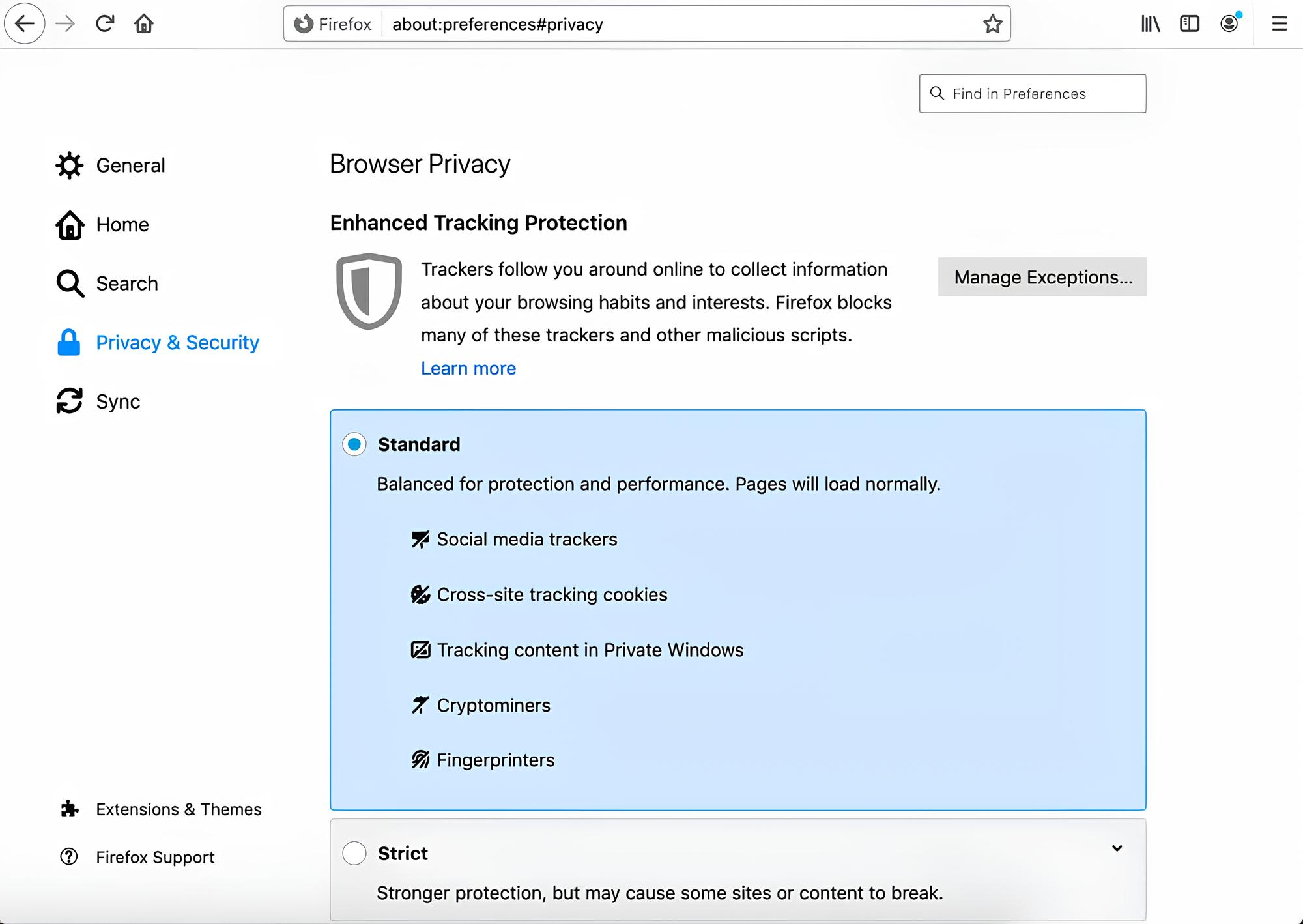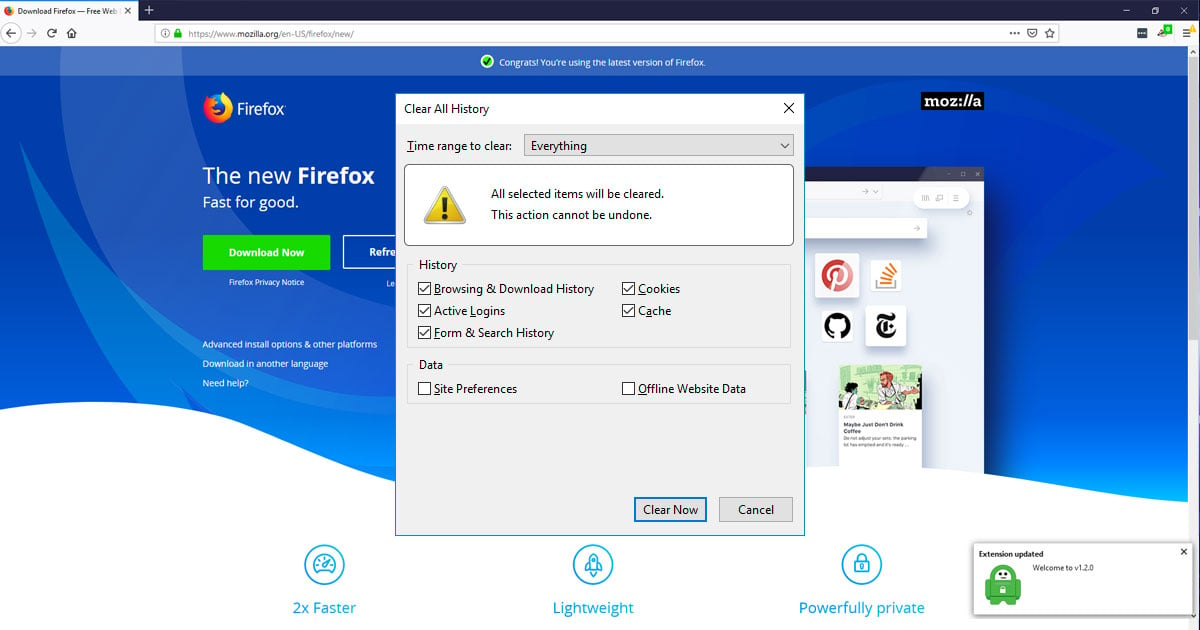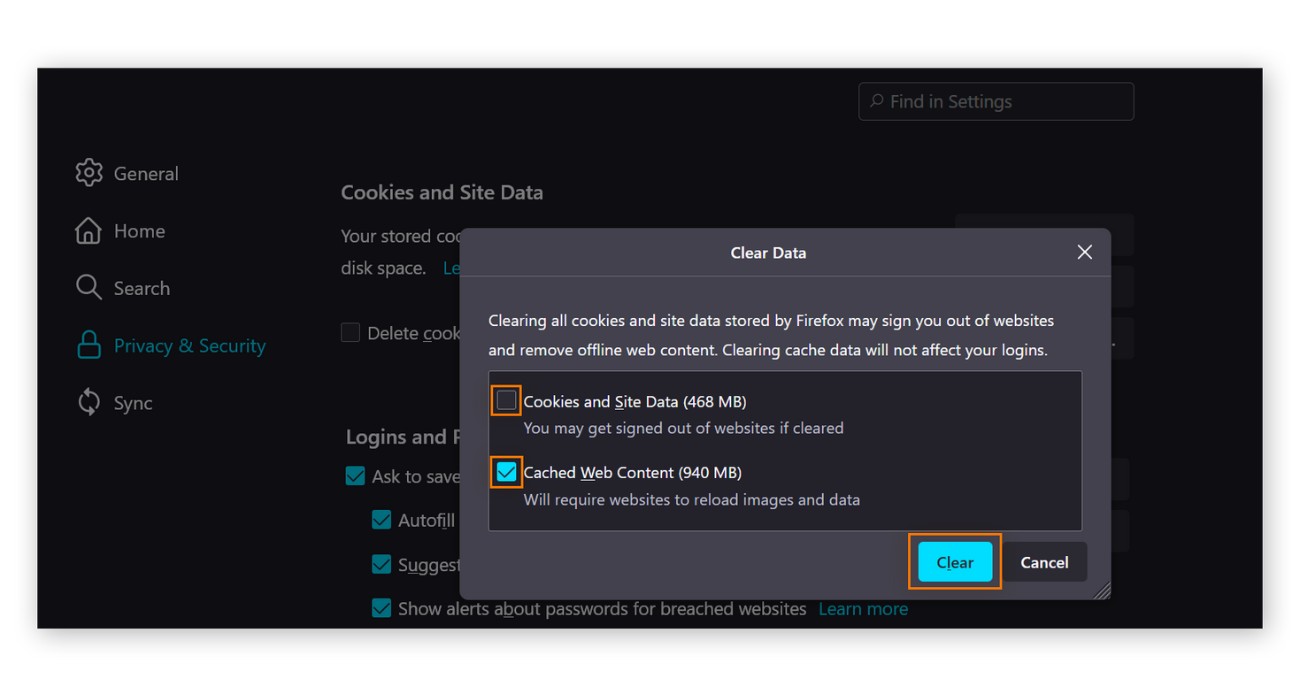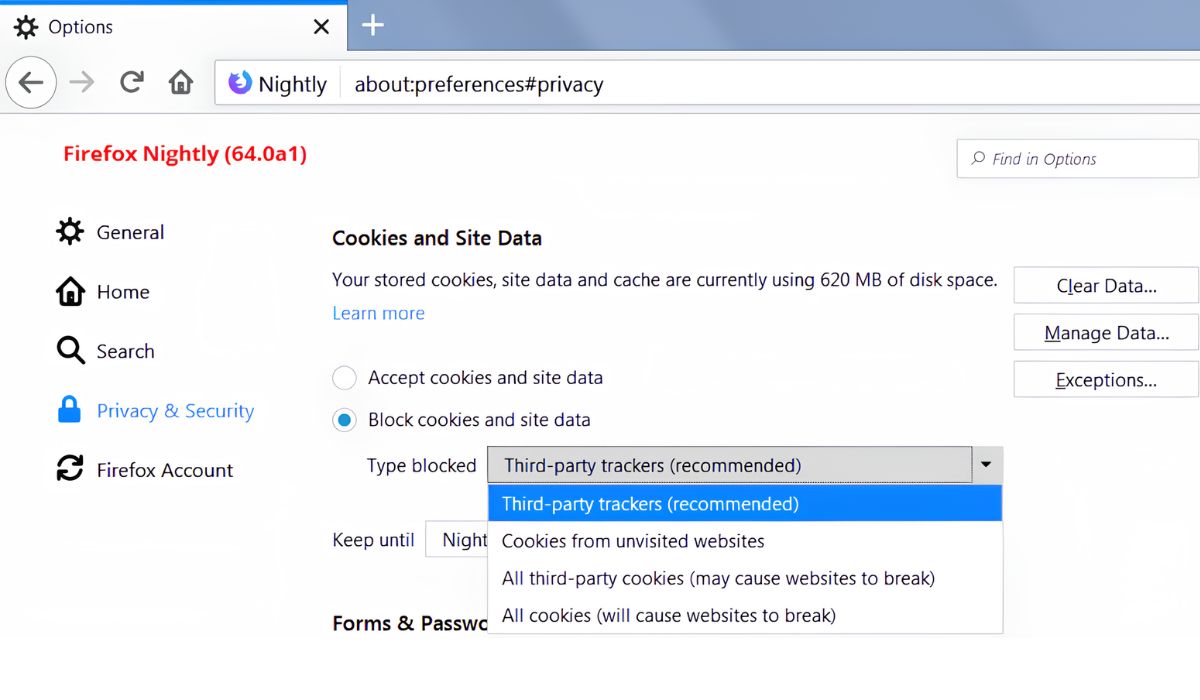Introduction
Enabling cookies in your Firefox browser is a fundamental aspect of optimizing your web browsing experience. Cookies are small pieces of data that websites store on your computer to remember your preferences, login information, and browsing history. By enabling cookies, you can ensure a seamless and personalized interaction with various websites, allowing them to remember your settings and provide a more tailored user experience.
In this article, we will guide you through the simple and essential process of enabling cookies in Firefox. Whether you're a seasoned internet user or a newcomer to the digital realm, understanding how to manage cookies in your browser is crucial for unlocking the full potential of your online activities.
By following the step-by-step instructions provided, you will gain the knowledge and confidence to take control of your browsing privacy and security settings. Additionally, you will be able to harness the benefits of cookies while maintaining a secure and efficient browsing environment.
Now, let's embark on this journey to empower your Firefox browser with the ability to handle cookies effectively. Whether you're exploring new websites, conducting research, or simply staying connected with friends and family, enabling cookies in Firefox will enhance your online experience and streamline your interactions with the digital world.
Step 1: Open Firefox
To begin the process of enabling cookies in Firefox, the first step is to open the Firefox web browser on your computer or mobile device. Firefox is a popular and versatile browser known for its user-friendly interface, robust privacy features, and extensive customization options. Whether you're using a Windows PC, Mac, or mobile device, launching Firefox is the initial step towards gaining control over your browsing settings.
If you're using a Windows PC, you can open Firefox by clicking on the Firefox icon located on your desktop or by searching for "Firefox" in the Windows Start menu. Once you locate the Firefox icon, simply double-click on it to launch the browser.
For Mac users, opening Firefox is just as straightforward. You can access Firefox by clicking on the Firefox icon in your Applications folder or by searching for "Firefox" using Spotlight. After locating the Firefox application, a single click will initiate the browser and prepare it for your browsing needs.
If you prefer to browse the web on your mobile device, such as a smartphone or tablet, you can open Firefox by tapping on the Firefox app icon on your home screen or app drawer. With a simple tap, you can enter the world of Firefox and begin customizing your browsing experience to suit your preferences.
Once Firefox is open and ready for use, you're one step closer to enabling cookies and unlocking a more personalized and efficient browsing experience. The next steps will guide you through the process of accessing the necessary settings within Firefox to manage your cookies effectively, ensuring that you can enjoy the benefits of website personalization while maintaining control over your privacy and security preferences.
With Firefox at your fingertips, you're poised to take charge of your browsing environment and harness the full potential of the web. Let's continue our journey towards enabling cookies in Firefox, empowering you to navigate the digital landscape with confidence and ease.
Step 2: Click on the Menu Button
Upon opening Firefox, the next crucial step in enabling cookies involves accessing the Menu button, which serves as the gateway to a plethora of browser settings and features. The Menu button, represented by three horizontal lines stacked on top of each other, is strategically positioned in the upper-right corner of the Firefox interface. This unassuming yet powerful icon is the key to unlocking a world of customization and control within the browser.
Locating the Menu button is a simple task, regardless of whether you're using Firefox on a computer or a mobile device. When using Firefox on a Windows PC or Mac, the Menu button is prominently displayed in the top-right corner of the browser window. Its distinctive three-line symbol makes it easily recognizable, serving as a central hub for accessing various browser functions and settings.
For users navigating the digital realm on a mobile device, such as a smartphone or tablet, the Menu button is equally accessible. When using Firefox on a mobile device, the Menu button is typically positioned in the top-right or bottom-right corner of the screen, depending on the specific layout and design of the browser interface. Its intuitive placement ensures that users can effortlessly tap on the Menu button to reveal a comprehensive array of browsing options and tools.
Clicking on the Menu button initiates a seamless transition to the Firefox menu, where users can explore a wide range of features and settings to tailor their browsing experience. From managing privacy and security preferences to customizing the browser's appearance and functionality, the Menu button serves as a central point of access for users to fine-tune their Firefox experience according to their individual needs and preferences.
By clicking on the Menu button, users gain access to a wealth of options, including the ability to navigate to the browser's settings, extensions, and additional tools. This pivotal action sets the stage for the next steps in the process of enabling cookies, paving the way for users to delve deeper into the inner workings of Firefox and take control of their browsing environment.
With the Menu button as your guide, you're poised to embark on a journey of exploration and customization within Firefox. By clicking on this unassuming yet influential icon, you're one step closer to unlocking the full potential of your browsing experience and gaining the knowledge and tools to enable cookies effectively.
As we proceed to the next steps, the Menu button will continue to serve as a central point of access, guiding us through the essential settings and options needed to enable cookies in Firefox. With each click, you're empowering yourself to shape your browsing environment and harness the benefits of personalized web interactions while maintaining control over your privacy and security preferences.
Step 3: Select Options
After clicking on the Menu button and immersing yourself in the array of features and settings within Firefox, the next pivotal step in enabling cookies involves selecting the "Options" menu. This essential action propels you into the heart of Firefox's customization and control capabilities, allowing you to fine-tune your browsing experience with precision and confidence.
Upon clicking the Menu button, a dropdown menu will gracefully unfold, revealing a diverse range of options and features designed to cater to your browsing needs. Among these options, you will find the "Options" menu, which serves as a gateway to a wealth of browser settings and preferences. By selecting "Options," you embark on a journey of empowerment, gaining access to the tools and controls necessary to shape your Firefox experience according to your unique requirements.
The "Options" menu is strategically positioned within the Firefox interface, offering users a seamless and intuitive pathway to delve into the browser's inner workings. Whether you're using Firefox on a Windows PC, Mac, or mobile device, the "Options" menu beckons you to explore its offerings and take charge of your browsing environment.
Upon selecting "Options," a new window or tab will emerge, presenting you with a comprehensive array of settings and preferences to explore. This immersive interface serves as a central hub for customizing your Firefox experience, encompassing everything from general browsing preferences to advanced security and privacy controls.
Within the "Options" menu, you will encounter a dedicated section for Privacy & Security, where the vital controls for managing cookies and site data reside. This section empowers you to define how Firefox handles cookies, offering granular control over which websites can store and access cookies on your device. By navigating to the Privacy & Security section within the "Options" menu, you position yourself at the forefront of managing your browsing privacy and security with precision and clarity.
As you delve into the Privacy & Security settings within the "Options" menu, you will encounter a wealth of options related to cookies, site data, and tracking protection. These options enable you to tailor Firefox's behavior regarding cookies, allowing you to specify whether websites can store cookies, retain site data, and utilize tracking mechanisms. By navigating through these settings, you gain the knowledge and tools to shape your browsing environment according to your preferences, ensuring a harmonious balance between personalized web interactions and robust privacy controls.
With the "Options" menu as your gateway to empowerment, you're poised to navigate the intricate landscape of Firefox's settings and preferences with confidence and clarity. By selecting "Options" and immersing yourself in the world of browser customization, you're taking a significant step towards enabling cookies in Firefox and shaping your digital interactions according to your unique needs and preferences.
As we proceed to the next steps, the insights gained from navigating the "Options" menu will continue to serve as a foundation for empowering you to manage cookies effectively within Firefox. With each selection and configuration, you're enhancing your browsing experience and gaining the knowledge and tools to navigate the digital realm with confidence and control.
Step 4: Go to Privacy & Security
Upon entering the "Options" menu within Firefox, the pivotal next step in enabling cookies involves navigating to the "Privacy & Security" section. This essential maneuver positions you at the forefront of managing your browsing privacy and security with precision and clarity, empowering you to define how Firefox handles cookies and site data.
The "Privacy & Security" section serves as a central hub for customizing Firefox's behavior regarding cookies, site data, and tracking protection. As you delve into this critical area, you gain access to a wealth of options designed to provide granular control over your browsing environment.
Within the "Privacy & Security" settings, you will encounter a dedicated subsection specifically tailored to managing cookies and site data. This subsection offers a comprehensive array of options, allowing you to dictate how Firefox interacts with cookies and data from various websites. By navigating through these settings, you gain the knowledge and tools to shape your browsing environment according to your preferences, ensuring a harmonious balance between personalized web interactions and robust privacy controls.
One of the key features within the "Privacy & Security" section is the ability to customize cookie settings based on your individual preferences. Firefox provides users with the flexibility to specify whether websites can store cookies, retain site data, and utilize tracking mechanisms. This level of control empowers you to tailor your browsing experience according to your unique requirements, ensuring that websites can provide personalized content while maintaining your desired level of privacy and security.
Furthermore, within the "Privacy & Security" settings, you have the option to manage exceptions for specific websites, granting you the ability to define how Firefox handles cookies and site data for individual sites. This granular control allows you to establish custom rules for websites, ensuring that your preferences are honored while navigating the digital landscape.
By navigating to the "Privacy & Security" section within the "Options" menu and immersing yourself in the array of cookie and site data management options, you position yourself at the forefront of managing your browsing privacy and security with precision and clarity. With each selection and configuration, you're enhancing your browsing experience and gaining the knowledge and tools to navigate the digital realm with confidence and control.
As we proceed to the next steps, the insights gained from navigating the "Privacy & Security" section will continue to serve as a foundation for empowering you to manage cookies effectively within Firefox. With each selection and configuration, you're enhancing your browsing experience and gaining the knowledge and tools to navigate the digital realm with confidence and control.
Step 5: Enable Cookies
Enabling cookies in Firefox is a pivotal step towards unlocking a personalized and seamless browsing experience. Once you have navigated to the "Privacy & Security" section within the "Options" menu, you are poised to delve into the essential settings that govern how Firefox handles cookies and site data.
Within the "Privacy & Security" settings, you will encounter the fundamental controls for managing cookies and site data. One of the key features within this section is the ability to customize cookie settings based on your individual preferences. Firefox provides users with the flexibility to specify whether websites can store cookies, retain site data, and utilize tracking mechanisms. This level of control empowers you to tailor your browsing experience according to your unique requirements, ensuring that websites can provide personalized content while maintaining your desired level of privacy and security.
To enable cookies in Firefox, you can simply check the box next to "Accept cookies and site data from websites." This straightforward action signals to Firefox that you wish to allow websites to store cookies on your device, thereby enabling a more personalized and seamless browsing experience. By enabling this option, you open the door to a myriad of benefits, including the ability for websites to remember your preferences, login information, and browsing history, ultimately enhancing your interactions with various online platforms.
Furthermore, within the "Privacy & Security" settings, you have the option to manage exceptions for specific websites, granting you the ability to define how Firefox handles cookies and site data for individual sites. This granular control allows you to establish custom rules for websites, ensuring that your preferences are honored while navigating the digital landscape.
By enabling cookies in Firefox, you are embracing the power of personalized web interactions while maintaining control over your privacy and security preferences. This pivotal action sets the stage for a more tailored and efficient browsing experience, allowing websites to remember your settings and provide a seamless user experience tailored to your preferences.
With cookies enabled, you are poised to navigate the digital realm with confidence, knowing that Firefox is adept at managing your browsing data in accordance with your preferences. By taking control of your cookie settings, you are empowering yourself to harness the benefits of website personalization while maintaining a secure and efficient browsing environment.

























